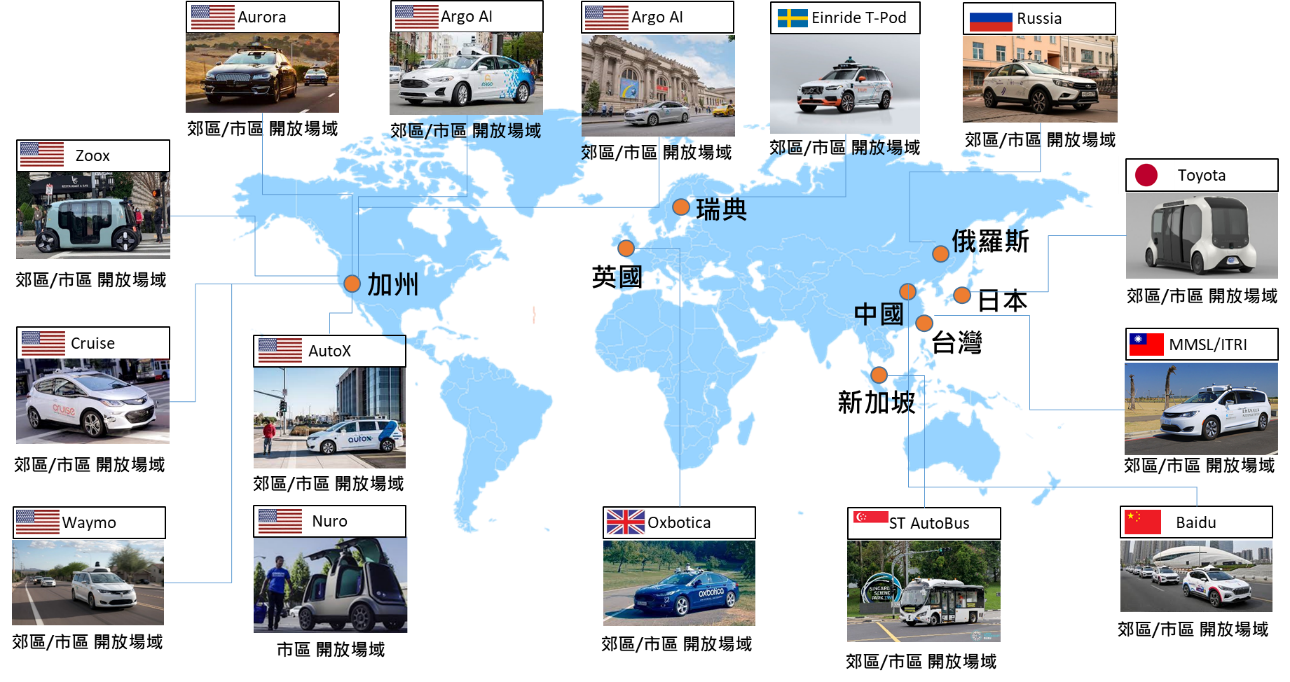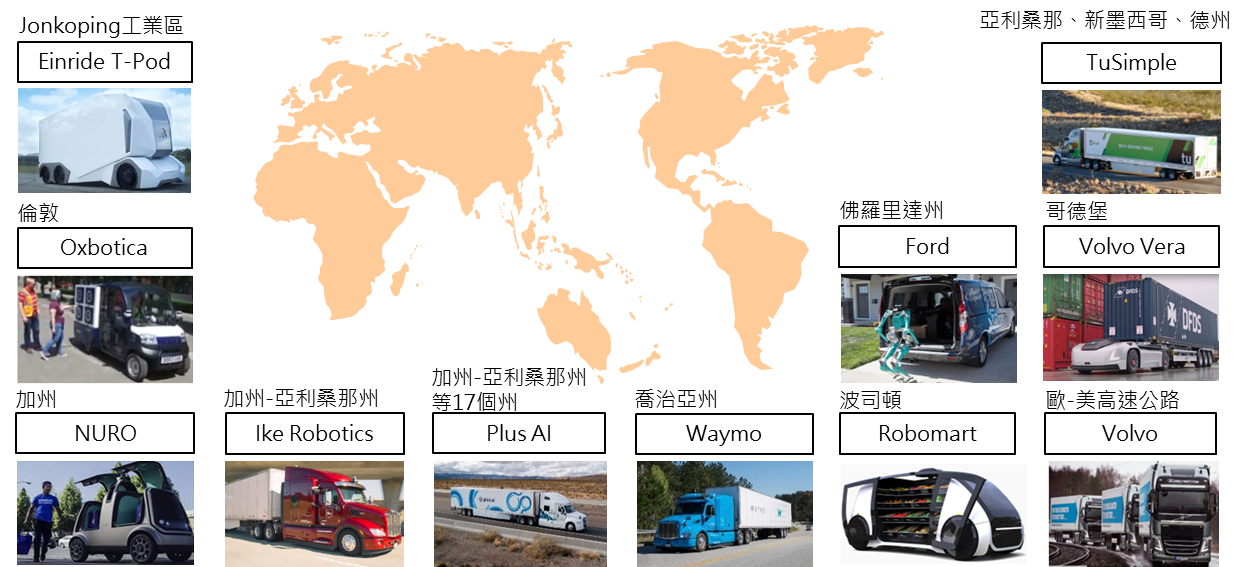- 回首頁
- 機械工業雜誌
- 當期雜誌
自駕技術應用於物流運輸-以全臺第一部自駕物流車上路為例
作者 陳斌勇、張聰海、杜宗翰、陳素珍
刊登日期:2022/04/01
摘要:自動駕駛技術無疑是目前全球車輛產業發展之重要趨勢,有從不同應用的技術投入,例如有自用車、計程車、公共巴士、物流車,以及其它特殊用車。全球在COVID-19爆發下,零接觸的自駕物流需求在物流業已展開了新的運作模式,新竹物流與工研院機械所合作的「區域內營業所間自駕直送」自駕物流創新營運模式,透過自駕物流車取代不足的貨車營業司機人力,並達到紓解物流轉運中心的轉運貨量,未來更希望能推動到全台的各營業所。自駕物流同時也是工研院機械所自駕團隊關注的重要服務應用之一,未來還有許多服務應用待與國內外廠商合作,例如工業園區無人駕駛送貨服務、空/海港園區無人運送服務、及公共運輸車隊服務等,以落實自駕技術產業應用。
Abstract:Autonomous driving technology is an undoubtedly important trend in the development of the global vehicle industry. There are many technical inputs from different applications such as private cars, taxis, public transportation buses, logistics vehicles, and other special vehicles. Under the global outbreak of the COVID-19, the demand for contactless self-driving logistics has launched a new operating model in the logistics industry. HCT Logistics and MMSL (Mechanical and Mechatronics Systems Research Labs, MMSL) of ITRI cooperated with the “intra-regional self-driving direct delivery”self-driving logistics innovative operation model to replace the insufficient manpower of truck drivers, and to relieve the volume of goods in the logistics transshipment center. In the future, HCT Logistics hopes that it can be promoted to all business offices in Taiwan. Self-driving logistics is also one of the important focus service applications of the MMSL self-driving team. In the future, there are still many service applications to cooperate with domestic and international companies such as driverless delivery services in industrial parks, driverless delivery service in air-port/harbor and public transportation services, etc., to implement the industrial application of autonomous driving technology.
關鍵詞:自動駕駛技術、無人駕駛、物流運輸
Keywords:Autonomous driving technology, Driverless, Logistics transportation
前言
依IHS Research預測,全球自動駕駛量産汽車將於2025年上市,估計銷量初期可達60萬輛,到2035年自駕汽年銷量可達到2,100萬輛,其中北美市場占比達29%,中國大陸占比達24%,歐洲市場占比可達20%。而根據全球人工智慧投資加速平台創投公司Comet Labs的調查報告指出,截至2017年全球投入自動駕駛車領域廠商高達263家,且超過1,000家的新創公司投入在自駕車相關領域。另外根據Frost市調公司推估在2025年約有25%新車為自駕車,波士頓顧問(BCG)公司預測2025年自駕車市場產值約為420億美元,2035年具備自駕車功能的新車銷售數量約佔25%,且Intel與SA國際研究機構樂觀預測,在2050年全自動駕駛具有創造7兆美元「乘客經濟」市場發展潛力[1][2],因此可了解自駕車未來市場是一片榮景。
若以自駕車目前的發展動態來看,國際車廠對於自動駕駛已有整體發展規劃及動作,自動駕駛技術無疑是目前全球車輛產業發展之重要趨勢,而各車廠投入的方向內容不盡相同,有從自駕車整體系統的,也有從不同應用層次的技術投入,例如有自用車、計程車、公共巴士、物流車,以及其它特殊用車。除了知名的車廠之外,自駕車議題也開創了許多新創公司的投入,這些新創公司具有許多獨特的技術,也陸續在全球各地的市/郊區展開相關的功能測試,如圖1。
在物流運輸方面,近日隨著電子商務的蓬勃發展,物流運輸在電商平台與實體貨物中扮演重要樞紐的角色,電子商務的快速成長,帶動全球物流運輸需求持續增加。依據Frost & Sullivan估計,2025年將有8,000輛達SAE Level 4水準的自駕卡車上路,2035年可突破154,000輛。預期自駕物流產業的龐大商機,可加速自駕技術於物流業的落地實現與商業應用。國際上已有自駕物流測試驗證案例,多家大廠投入自駕物流車短程配送服務或自駕貨卡車隊公路運行測試,如:Waymo的自駕小型貨車及自駕卡車、Nuro自駕配送車、TuSimple自駕卡車…等;除一般物流運輸常見的的貨卡車外,也發展出多款新型態商用物流車,如何運用科技達成最快速的送給客戶,讓數位轉型成為產業的核心競爭力,加上全球在疫情爆發下,零接觸的自駕物流需求在物流業已展開了新的模式,如圖2。

圖1 全球新創自駕車團隊測試狀況

圖2 全球自駕物流測試運行車型及地區
更完整的內容歡迎訂購 2022年04月號 (單篇費用:參考材化所定價)
主推方案
無限下載/年 5000元
NT$5,000元
訂閱送出